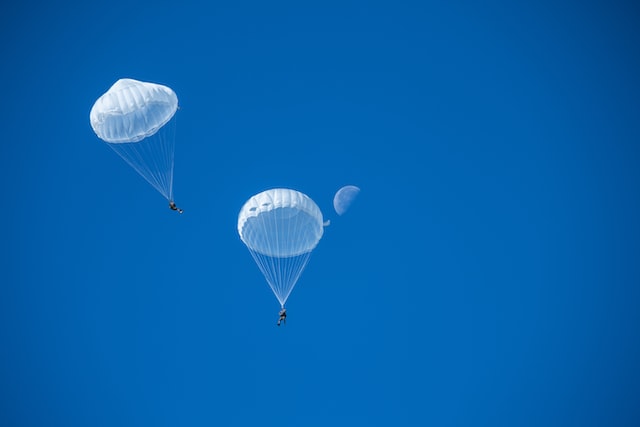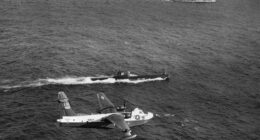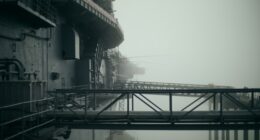Airborne refers to military personnel and equipment that are transported by aircraft and dropped by parachute. Air assault involves the use of helicopters to rapidly move troops and equipment into combat areas.
What is Airborne?
(Photo by Untitled Photo on Unsplash )
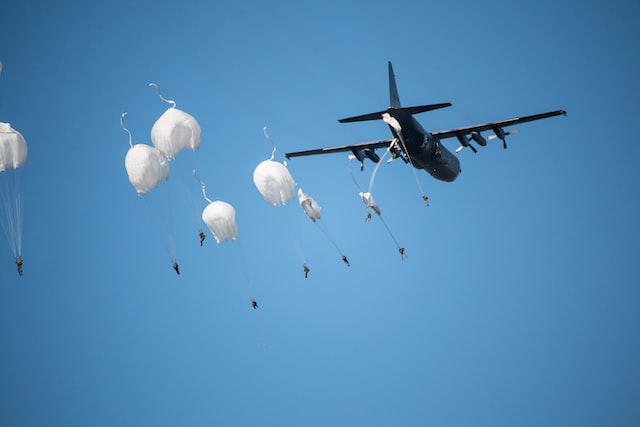
The Army classifies operations as airborne or air assault based on the method of how Soldiers are inserted into the objective area. Airborne operations are those in which Soldiers parachuted from aircraft, and air assault operations are those in which Soldiers are inserted via helicopter.
In an airborne operation, paratroopers use their parachutes to jump from transport aircraft at a low altitude and land at their objective. The main purpose of an airborne operation is to insert troops behind enemy lines to achieve a strategic surprise.
What is Air Assault?
(Image by ejbartennl from Pixabay )
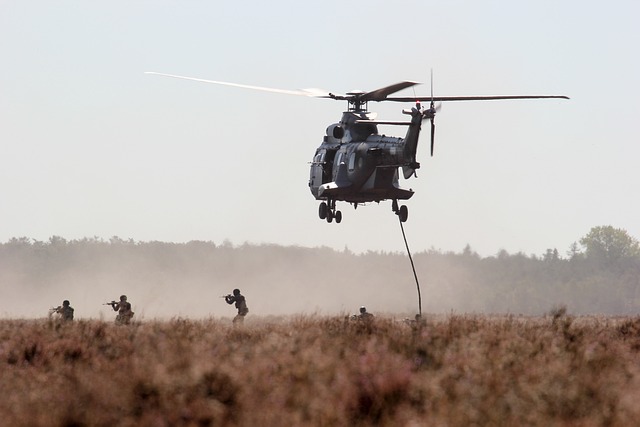
Air assault is a military tactic that involves using helicopters to transport and insert troops and equipment into combat areas quickly and efficiently. It allows for rapid movement and deployment of troops in areas where traditional ground transportation would be difficult or impossible. In addition to helicopter assets, air assault troops are also trained in rapid rope rappelling and vertical envelopment, which allows them to descend from helicopters into areas that are too small or too dangerous for a conventional landing.
Airborne Vs. Air Assault – Key differences
In the Army, there are two primary ways to get infantry troops into battle: Airborne and Air Assault. Both involve using helicopters to deliver troops to their destination, but there are key differences between the two that set them apart. Here’s a look at the key differences between Airborne and Air Assault:
- Airborne units are typically larger in size than air assault units and are delivered to their destination via fixed-wing aircraft.
- Air assault units are delivered to their destination via rotary-wing aircraft and are designed for rapid deployment.
- Airborne units typically parachute into their objective area, while air assault units land directly on their objective.
- Airborne troops are often required to secure an airstrip or drop zone before other troops can be brought in, while air assault troops can be rapidly deployed without having to secure an airstrip beforehand.
The pros and cons of Airborne
Pros:
- Rapid deployment: Airborne operations allow for troops to be quickly and efficiently deployed into a combat zone, which can be critical in certain situations.
- Surprise factor: The ability to drop troops behind enemy lines or into unexpected areas can provide a strategic advantage and catch the enemy off guard.
- Flexibility: Airborne operations can be conducted in a variety of terrain and environments, allowing for greater flexibility in battle planning.
Cons:
- Vulnerability: Troops dropped by parachute are vulnerable to enemy fire during the drop and while on the ground, as they may be separated and disorganized.
- Equipment limitations: Airborne troops are limited in the amount of equipment they can carry, as they must be able to transport it during the drop.
- Cost: Airborne operations can be expensive, as they require specialized equipment and training.
It’s worth noting that the pros and cons of airborne operations can vary depending on the specific situation and objectives.
The pros and cons of Air Assault
Pros:
- Rapid deployment: Air assault allows for troops and equipment to be quickly inserted into a combat zone, which can be critical in certain situations.
- Tactical advantage: Air assault allows for troops to be inserted into areas that would be difficult or impossible to reach by traditional ground transportation, providing a tactical advantage.
- Flexibility: Air assault can be conducted in a variety of terrain and environments, allowing for greater flexibility in battle planning.
Cons:
- Vulnerability: Helicopters used in air assault operations are vulnerable to enemy fire, and troops can be exposed during the insertion and extraction phases.
- Dependency on weather: Air assault operations can be impacted by weather conditions, as helicopters may not be able to fly in certain conditions.
- Limited payload: Helicopters used in air assault operations have a limited payload capacity, which can restrict the amount of equipment and troops that can be transported.
As with airborne operations, the pros and cons of air assault operations can vary depending on the specific situation and objectives.
Are airborne Soldiers elite?
Airborne soldiers are often considered to be elite due to the specialized training and physical requirements required to become a paratrooper. Airborne soldiers must complete the Basic Airborne Course, which includes rigorous physical training and instruction on parachuting techniques. Additionally, airborne units are often tasked with high-risk missions that require a high level of skill and discipline. However, it’s important to note that not all soldiers who serve in airborne units are necessarily considered elite, as individual performance and qualifications can vary.
What was the biggest air assault?
The largest air assault in history took place during the Vietnam War in 1967, known as Operation Junction City. The operation involved the insertion of a massive combined American and South Vietnamese ground force into an area of dense jungle and rugged terrain in Tay Ninh province, located near the Cambodian border.
The air assault consisted of approximately 25,000 US and South Vietnamese troops, who were flown into the area by over 700 helicopters over a three-day period. The goal of the operation was to disrupt and destroy the enemy’s logistical and command and control capabilities, as well as locate and destroy enemy forces in the area.
The operation was one of the largest and most complex military operations of the Vietnam War, and involved a high level of coordination between the various military units involved. Despite encountering significant resistance from the enemy, the operation was considered a success, with many key enemy positions and supply routes destroyed.
However, the operation was also costly, with over 280 American and South Vietnamese troops killed, and over 1,600 wounded. Additionally, the heavy use of helicopters during the operation resulted in a significant number of aircraft losses due to enemy fire and accidents.
What was the biggest airborne assault?
The biggest airborne assault in history took place during World War II, on 6 June 1944, as part of the Normandy landings. The operation, known as Operation Neptune, involved the airborne insertion of over 13,000 paratroopers into Normandy, France, in order to secure key objectives and disrupt enemy defenses prior to the amphibious invasion.
The airborne assault consisted of two main parts: the British 6th Airborne Division and the American 82nd and 101st Airborne Divisions. The British 6th Airborne Division was tasked with securing key bridges and positions along the eastern flank of the landing zone, while the American divisions were tasked with securing key positions to the west.
The airborne assault began in the early hours of the morning on 6 June, with paratroopers being flown in by over 1,000 transport aircraft and gliders. Despite encountering heavy enemy fire and confusion caused by the scattered drop zones, the paratroopers were able to secure many of their objectives and disrupt enemy defenses prior to the amphibious landing.
The airborne assault was a critical part of the Normandy invasion, allowing for the securement of key objectives and the disruption of enemy defenses. However, the operation was also costly, with a significant number of paratroopers being killed, wounded, or captured. Despite this, the airborne assault remains one of the most impressive and significant feats of airborne warfare in history.
Why is the 101st no longer airborne?
The 101st Airborne Division was originally an airborne infantry division that was activated in August 1942. The division saw action in World War II, most notably during the Battle of Normandy and the Battle of the Bulge. It was subsequently deactivated in 1945, but reactivated in 1948 as an air assault division.
The 101st Airborne Division is no longer airborne because it has been redesignated as an air assault division. The primary difference between an airborne division and an air assault division is that the latter is structured and equipped to conduct air assaults, which are a type of helicopter-borne operation.
Are there females in airborne?
Yes, there are females in airborne. The Army does not have a separate airborne division for women; they train and serve alongside their male counterparts. There are currently three all-female Ranger companies, but they are new and not yet at full strength.
How do I join airborne?
Airborne troops are highly trained and well-equipped soldiers who are inserted into combat by parachute. They are able to operate independently in small units and are often used to seize strategic objectives or to provide reinforcements in critical situations.
If you’re interested in joining airborne forces, you’ll need to be physically fit and mentally tough. You’ll also need to meet the minimum qualifications for enlistment in the military branch of your choice. Once you’ve completed basic training, you’ll attend airborne school where you’ll learn how to safely jump out of airplanes and land correctly with your parachute.
Featured Image By – Untitled Photo on Unsplash
